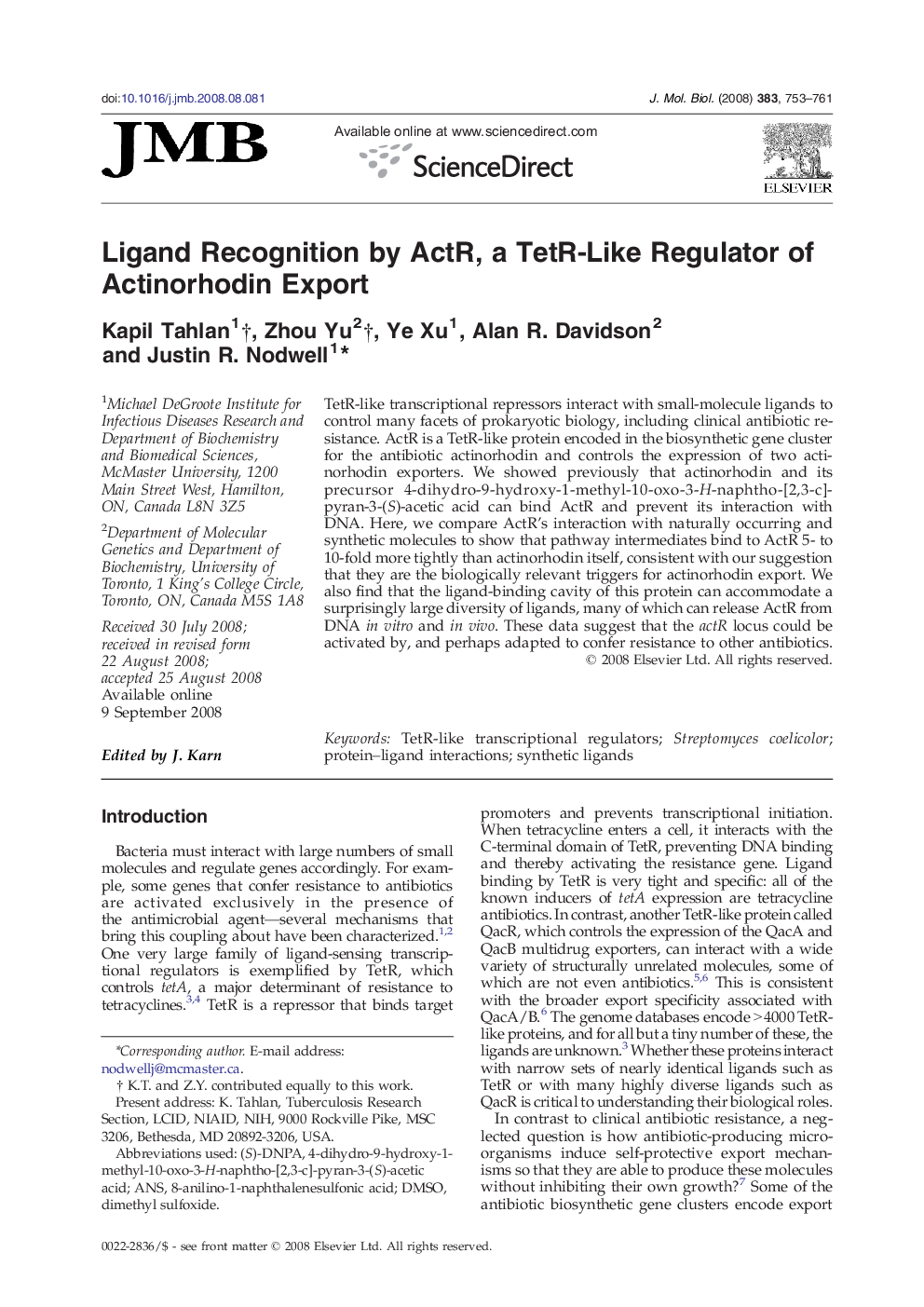| Article ID | Journal | Published Year | Pages | File Type |
|---|---|---|---|---|
| 2186945 | Journal of Molecular Biology | 2008 | 9 Pages |
TetR-like transcriptional repressors interact with small-molecule ligands to control many facets of prokaryotic biology, including clinical antibiotic resistance. ActR is a TetR-like protein encoded in the biosynthetic gene cluster for the antibiotic actinorhodin and controls the expression of two actinorhodin exporters. We showed previously that actinorhodin and its precursor 4-dihydro-9-hydroxy-1-methyl-10-oxo-3-H-naphtho-[2,3-c]-pyran-3-(S)-acetic acid can bind ActR and prevent its interaction with DNA. Here, we compare ActR's interaction with naturally occurring and synthetic molecules to show that pathway intermediates bind to ActR 5- to 10-fold more tightly than actinorhodin itself, consistent with our suggestion that they are the biologically relevant triggers for actinorhodin export. We also find that the ligand-binding cavity of this protein can accommodate a surprisingly large diversity of ligands, many of which can release ActR from DNA in vitro and in vivo. These data suggest that the actR locus could be activated by, and perhaps adapted to confer resistance to other antibiotics.
